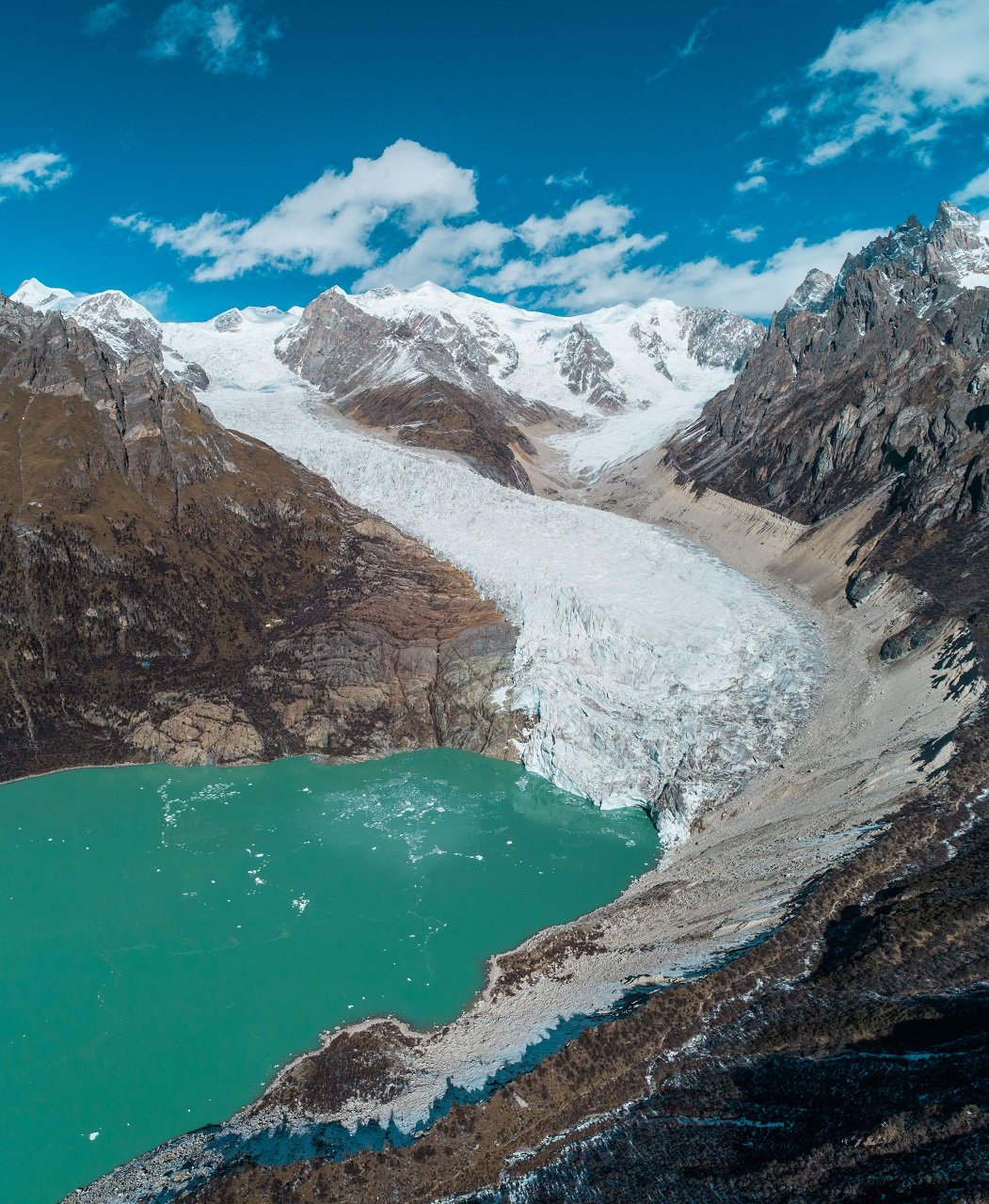(CN) --- Spurred by climate change, glacial retreat is intensifying across much of the Eastern Himalayas --- known as Earth’s “Third Pole” --- threatening vulnerable downstream communities with torrential floods.
The Hindu Kush-Himalaya, Tibetan Plateau and surrounding areas contain more glaciers than anywhere else on Earth outside of the North and South poles, which is where their nickname comes from. Rising temperatures across the region in recent years are melting these ancient glaciers at an alarming pace --- when that occurs too quickly, the result is a “glacial lake outburst flood.”
These floods occur when a lake that formed below a melting glacier essentially bursts at the seams. They can devastate communities hundreds of miles downstream and across international boundaries, further complicating prevention and relief efforts, especially in politically sensitive areas like the Pamir region between Tajikistan and Afghanistan.
An international team of researchers from Switzerland and China investigated the threat posed by these rapidly retreating glaciers to see if a pattern could be found identifying the areas at greatest risk of flooding. They published their results in a new study Thursday in the journal Nature Climate Change.
“The risk of glacial lakes to burst will triple across High Mountain Asia in the future,” said Markus Stoffel, a professor of climatology at the University of Geneva in Switzerland. “This is because more lakes will form as glaciers melt, and as these lakes will be closer to summits and steep slopes where unstable slopes occur more often.” Professor Stoffel explained that as ice and rock break free and fall into these lakes they’re likely to create tsunamis, causing them to rapidly empty and flood the regions downstream.
Glacial lakes come in two primary types: moraine-dammed and ice-dammed. Moraine-dammed lakes form when a glacier retreats from the regolith and rock it carried along which accumulates to block the flow of meltwater. Ice-dammed lakes form when the glacier itself blocks the lake’s drainage. When either of these natural dams fail, the results can be catastrophic and unpredictable.
Research on glacial lake outburst flooding has mainly focused on moraine-dammed lakes because these tend to hold back a larger volume of water, and thus a larger potential disaster. Moraine-dams are also weaker and more suspectable to the effects of climate change, making them ideal subjects to focus on.
“Outburst floods from moraine-dammed glacial lakes can be triggered by various mechanisms, including intense precipitation and snowmelt and most commonly, from the impact of ice and/or rock avalanches into a lake,” said the authors in their study. “While robust long-term trends in GLOF frequency are not evident the GLOF threat is expected to increase in response to future warming as lakes expand towards steep and destabilizing mountain cliff.”
The authors studied past glacial flooding events to model and evaluate how and where future deglaciation will impact the Third Pole communities downstream from these lakes. They reviewed satellite images from 1990 to 2015 which revealed over 26,000 glacial lakes in the region, one-third of which are dammed by moraines. These lakes are primarily distributed along the Hindu-Kush-Himalaya-Hengduan Shan mountains and across inner and southeast Tibet, along with the Tien Shan mountains.
After analyzing satellite images and performing topographic modeling the team assigned a risk profile to 7,000 lakes in the region --- 96% of which they classified as high or very high risk. They compared those results with past glacial lake flooding events to validate the results and prove their approach could be applied to future scenarios. The authors found the greatest risks are currently being posed to communities across the borders of China, India, Nepal and Bhutan.
“It is impossible to make any predictions of where lakes will empty first,” advised Stoffel. “What is possible instead is to survey those lakes that are highly susceptible to produce glacial lake outburst floods. The analysis of satellite imagery can, for instance, help to identify zones of instability above lakes. On the ground, early warning systems could be installed so that local populations could move to higher grounds should an event happen. In situations where warnings are not possible, a partial emptying of critical lakes is a possibility (e.g., through the construction of spillways), but these are costly measures.”
Stoffel said his research team is currently working in India for the Swiss Development and Cooperation Agency to design and implement early warning systems in the states of Himachal Pradesh and Sikkim to reduce the risks existing at some lakes that have been identified as critical.
“It is a nice example of how research can aid sustainable development, but of course many more such projects will be needed to reduce the vulnerability of mountain societies across HMA,” he added.
Subscribe to Closing Arguments
Sign up for new weekly newsletter Closing Arguments to get the latest about ongoing trials, major litigation and hot cases and rulings in courthouses around the U.S. and the world.









